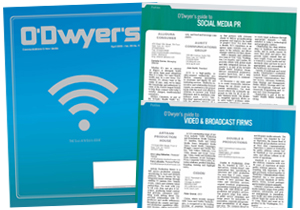 For success in this content-cluttered world, brands need to invest more in targeting specific segments of their audience. That means creating better content over simply more content, quality over quantity.
For success in this content-cluttered world, brands need to invest more in targeting specific segments of their audience. That means creating better content over simply more content, quality over quantity.
Here are some content marketing ideas to consider:
Gain control of each platform
A brand that reaches a member of its target audience but doesn’t provide a way for them to continue engaging is like adding coins to a piggy bank without its plug inserted.
The first step in retaining the value the content earns entails understanding what control each platform provides.
On email, brands control to whom they distribute content. Email lists allow them to reach a group of followers who have likely engaged with their content before. They contain links back to owned platforms, which nurture the recipient further down the engagement path. The downside of email is brands don’t expand their audience.
|
|
A social message reaches only a set audience, but that audience controls how far the brand message goes. When social audiences share, they amplify the message to new audiences. This lack of distribution control means brands must provide a way for their expanded audience to get to platforms in which they have designed a nurturing system. The easiest way to do so is providing a link back to a website or blog that offers more content and introduces them to products and services.
With a blog, brands don’t control who sees the content since many blog readers come from search and social recommendations. Providing a clear path within posts and on the site architecture will help nurture blog visitors down the engagement funnel and towards a sale, donation, enrollment or whatever your ultimate goal may be.
Determine value of the content
Whenever a brand distributes content, it’s making a request of its audience. The request could be as minor as an investment of time or as significant as an email address or social account. Understanding the worth of each piece of content is key.
An unknown brand or one only offering short-form tips and tricks will likely fall short of goals if they gate it behind a request for an email address. However, when offering valuable, compelling content, audiences will see giving up their email address as a great value.
Recently, Cision partnered with best-selling author Brian Solis and renowned cartoonist Gaping Void to create an e-book titled What If PR Stood for People and Relationships? The content earned nearly 300,000 views, 2,000 social shares, influencer shares totaling a more than 2 million person reach and hundreds of new prospects.
That’s not to say a brand partnering with an industry influencer is content marketing’s silver bullet. Brands need to consider what they hope to achieve with each campaign, understand which content formats and platforms their audiences prefer, and determine how to create compelling content that works in those spaces.
Test before you invest
What’s the most effective piece of content? It depends.
A recent survey showed an almost completely even split among content marketers when asked if long-form, short-form, video and social media was the most effective in terms of ROI. Even “I don’t know” racked up about a similar number of votes as the other four categories.
The reason for the uncertainty is that no one format fits every audience. Smart brands test content before investing fully. Testing helps determine if their message, platform, medium and tone will make a significant impact or fall flat. A win inspires confidence for moving forward. A loss can easily be shaken off.
This is especially good news for small businesses or those content marketers with few resources. Test the waters with a piece of raw footage or small part of a campaign and use feedback like views, comments, shares and conversions to gauge whether to invest more.
Benchmark the results from the test content with a more polished piece to determine if the extra investment is worth it. A gif, for example, costs less to produce and distribute. If it performs nearly as well as a long-form edited video, brands will want to focus on that, saving them time and money.
This is not just a strategy for small or resource strapped-businesses. Amazon tested original content publicly, releasing 13 TV pilots at the start of the year and choosing five to turn into series.
“Amazon Studios seeks feedback about projects and ideas, even in their earliest stages,” Amazon writes on its own site. “We will test premises, storyboards, posters, videos, test movies, pilots, promos, and other formats to see what people think.”
After its testing period, Amazon chose the five shows that performed best for different parts of its audience, selecting two children’s shows, two dramas and a docu-series.
To dip toes into testing, consider using email marketing, PPC and SEO. These are cost-effective ways to identify the pain points, formats and messaging that resonate best.
Overcome challenges, find success
Though content marketing has become a central part of many brands’ marketing plans, they still have challenges to overcome — mainly, resources.
After all, 34% of content marketers cite “lack of budget” as their biggest content challenge. Another 11.5% see “lack of time” as their biggest hurdle. That’s 45% of content marketers who lack resources.
By taking a methodical approach to content creation that identifies what target audiences want, where they want it and testing along the way, it will take longer to get a campaign out the door.
However, brands that follow this outline will find that they saved resources, produced better results and provided a springboard for moving forward with better content marketing.
* * *
Mark Thabit is CMO of Cision.



 What if companies could harness the fury of online outrage into a force for good? This is precisely where companies can start turning the trolls into brand champions.
What if companies could harness the fury of online outrage into a force for good? This is precisely where companies can start turning the trolls into brand champions. Audiences interacted with brand content far more often on Facebook and Instagram in 2023 than they did via X (formerly Twitter), according to a report that tracked engagement trends across different social networks.
Audiences interacted with brand content far more often on Facebook and Instagram in 2023 than they did via X (formerly Twitter), according to a report that tracked engagement trends across different social networks. Can public relations help counteract the dissension fostered by the power of digital platforms to spread hate, fear and confusion?
Can public relations help counteract the dissension fostered by the power of digital platforms to spread hate, fear and confusion? The number of Americans who get their news from TikTok has quadrupled in the last three years, according to a recent Pew Research Center report.
The number of Americans who get their news from TikTok has quadrupled in the last three years, according to a recent Pew Research Center report.


 Have a comment? Send it to
Have a comment? Send it to 
No comments have been submitted for this story yet.